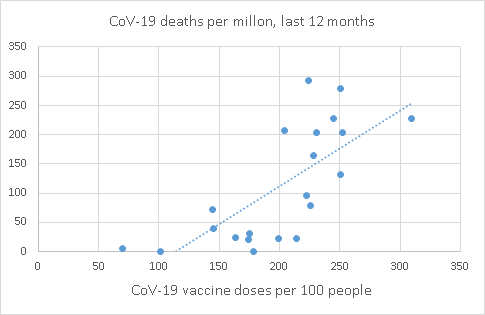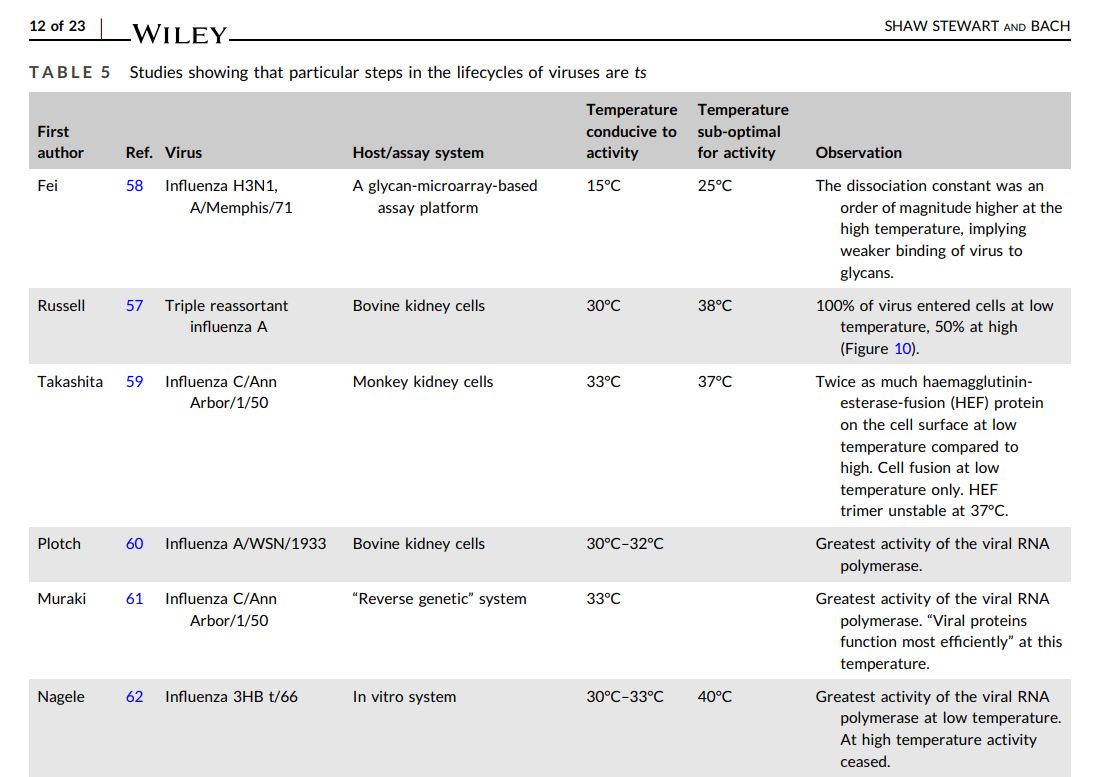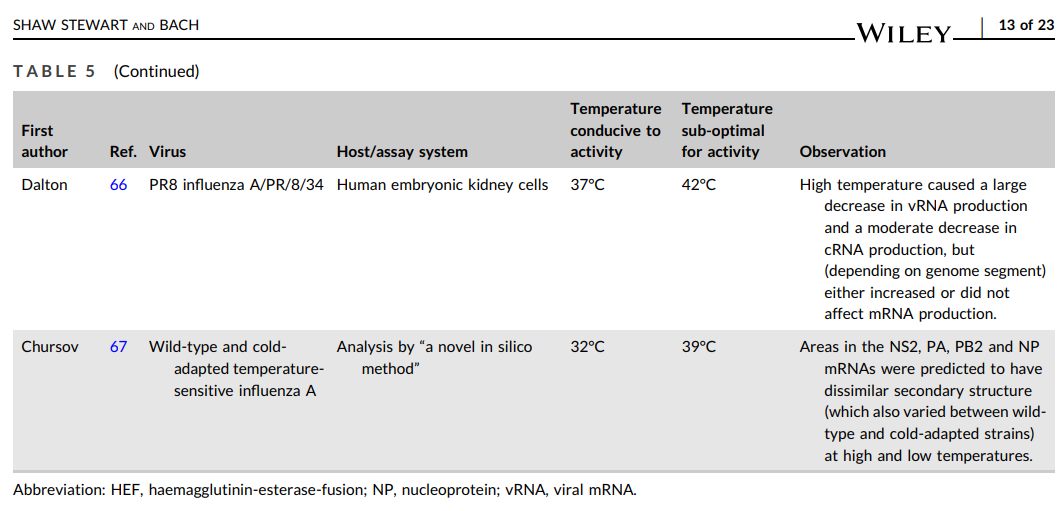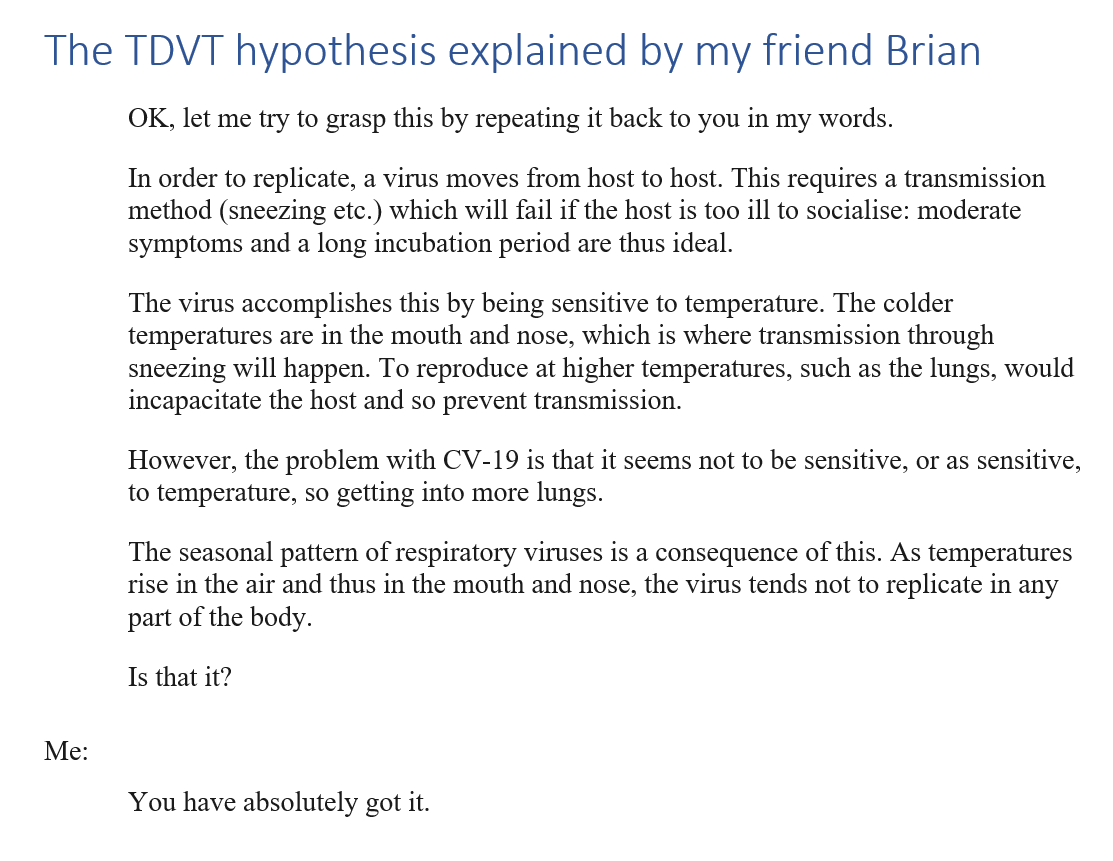1/ Important observation: many respiratory viruses are much easier to culture at 33°C than 37°C – as predicted by temperature dependent viral tropism #TDVT
Examples from our paper, below
doi.org/10.1002/rmv.22…
Examples from our paper, below
doi.org/10.1002/rmv.22…

2/ Interestingly, this is also seen for CoV-2 doi.org/10.1371/journa…
However, virologists normally put this down to the thermal sensitivity of the host CELLS – less interferon may be produced by cells at 33°C than 37°C doi.org/10.1073/pnas.1…
However, virologists normally put this down to the thermal sensitivity of the host CELLS – less interferon may be produced by cells at 33°C than 37°C doi.org/10.1073/pnas.1…
3/ Actually our immune defences do seem to be weaker when we breath cold air –this may explain the observation that standing still outdoors is correlated with increased mortality from respiratory disease (while outdoor exertion sufficient to cause sweating seems to be protective) 

4/ But can our greater susceptibility when breathing cold air explain, on its own, the strange universal winter seasonality of respiratory viruses?
At least 4 lines of evidence say it can’t. In reality we also need to invoke the thermal sensitivity of virus itself. Here's why:
At least 4 lines of evidence say it can’t. In reality we also need to invoke the thermal sensitivity of virus itself. Here's why:
1. Viral resp infections are common year-round in the Tropics, but rare in temperate locations during summer. This weighs against the idea that breathing warm air significantly increases immunity. (Suggests instead that thermal sensitivity in resp-virs adapts to climate & season) 

2. There are often sudden peaks in respiratory illness in early autumn (circles) – when air temperature has only dropped by a few degrees and is still above average. If immunity can be weakened by such a small temperature drop, why don’t we get far greater sickness in mid-winter? 

3. Similarly, the very rapid short-term response of respiratory illness to temperature dips, and the simultaneous epidemics throughout large regions, suggest a HARVESTING mechanism in winter. Here are colds and flu in the Netherlands in winter 1925/26 

4. Several influential studies from the 1950s and 60s using recycled “pedigree” strains suggest that our immunity is not greatly reduced by chilling/cold air. (Rather, it seems that the recycled viral strains used were unlike “wild” viruses.) 

9/ Both mechanisms are supported by wet-lab studies and by the observation that outdoor exertion sufficient to cause sweating is (or seems to be) protective
(An anorak is a parka BTW, and a long-sleeved vest is an undershirt!)



(An anorak is a parka BTW, and a long-sleeved vest is an undershirt!)




• • •
Missing some Tweet in this thread? You can try to
force a refresh


















